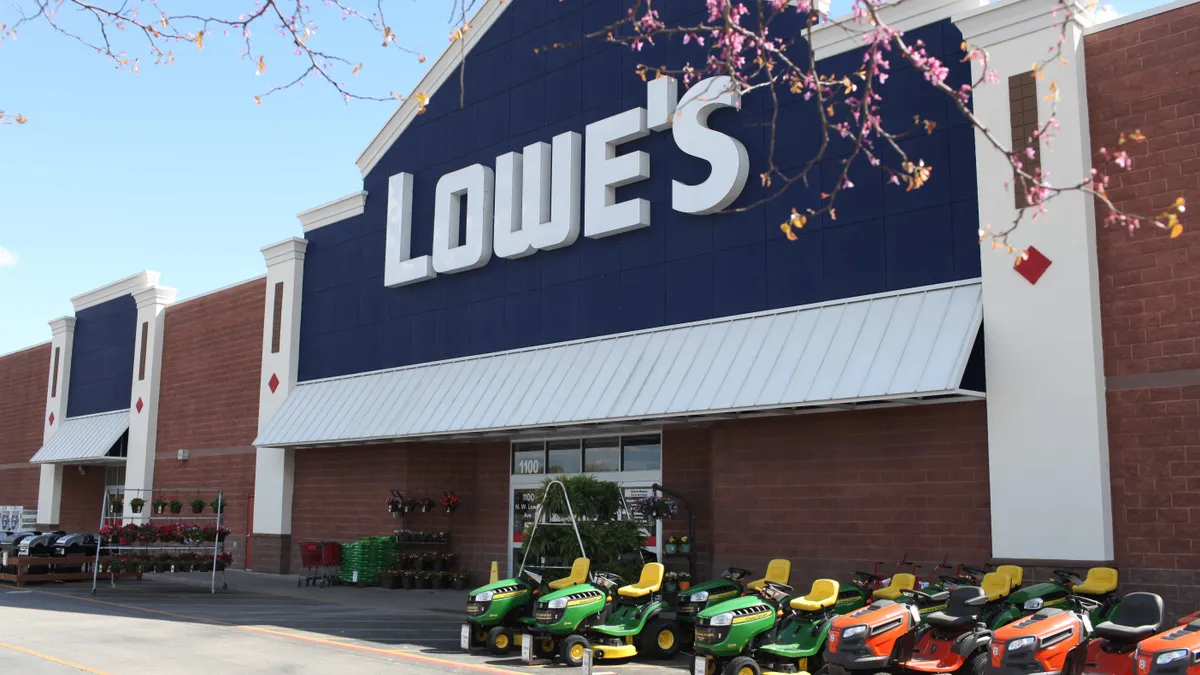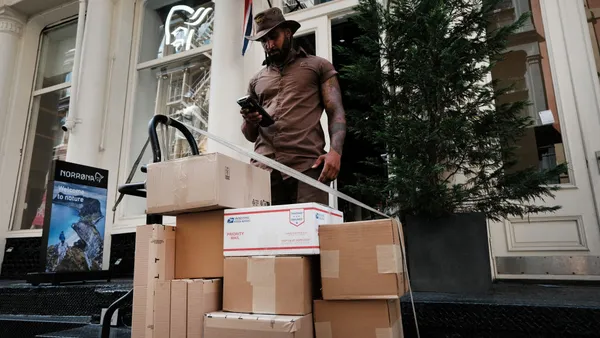Dive Brief:
- Lowe's plans to add 50 cross dock terminals, seven bulk distribution centers and four e-commerce fulfillment centers over the next year and a half, the retailer said Wednesday. The expansion is part of a $1.7 billion investment to expand its distribution network by 2023.
- One of the e-commerce fulfillment centers and 20 of the cross dock terminals will open this year to meet growing need for next- and same-day delivery.
- A third party will run Lowe's bulk distribution centers, Don Frieson, EVP of supply chain at Lowe's, told Supply Chain Dive in an interview. The facilities will operate using the retailer's WMS, giving Lowe's "visibility clear through the distribution network, back to the customer," Frieson said.
Dive Insight:
Lowe's is in the midst of transforming to an omnichannel supply chain, Frieson said. The retailer historically has made the majority of deliveries from stores. The addition of warehouses moves Lowe's away from a store-based home delivery model, which Frieson acknowledged is inefficient.
"Now we can actually route deliveries based on market utilization," Frieson said. "We get the benefit of a flexible fulfillment network."
Over the last year and a half, Lowe's has opened supply chain facilities in the Midwest, the Southeast and on the West Coast. The retailer stood up an e-commerce facility in Nashville in 2018 and will open another this October in Mira Loma, California, outside of Los Angeles. With those two facilities, Lowe's said it will be able to reach nearly 100% of customers nationwide with two-day delivery.
The retailer's news follows a similar announcement from Home Depot last week to add three warehouses given growing consumer demand for products related to DIY projects.
Frieson said cross dock facilities are "integral" to Lowe's omnichannel strategy, particularly as online sales grew 80% year over year in the first quarter. The terminals allow Lowe's to deliver from a distribution center through a cross dock and then to the customer.
"It takes the complexity out of the store," Frieson said. It also reduces the number of touchpoints, lowering the chances of damage to goods and decreasing total mileage.
Frieson gave the example of a customer placing an order at 4 p.m. The distribution center can ship to the cross dock terminal that evening, and load to a truck for last-mile delivery the following day.
Although there is one caveat to this timeline: the item must be in stock at the distribution center.

Stockouts have historically been an issue for Lowe's — a "retail fundamental" Lowe's CEO Marvin Ellison sought to improve when he took the helm in July 2018. "We are significantly behind in our supply chain strategy," he said on his first earnings call as CEO that August. "We have a large number of out-of-stocks."
During the pandemic, executives indicated stockouts are not a problem, even as demand increased and many Lowe's store locations remained open as essential retail.
"As demand accelerated, we were actually in-stock and able to serve [customers], which historically we would have probably struggled with a little bit," CFO David Denton said at the Baird 2020 Global Consumer, Technology and Services Conference in June.
Lowe's has worked actively with vendors "so that we can flow more product," Frieson said.
Denton credits the retailer's recent supply chain work for its ability to meet demand spikes during the pandemic.
"A year and a half ago, the business was a little fragile from an operational perspective. And I think we've hardened that," the CFO said at the Oppenheimer 20th Annual Consumer Growth and E-Commerce Conference in June. "We leaned into fixing our out of stock problems. ... We now have the replenishment algorithms working more appropriately." Denton said if the pandemic happened last year, "I'm not sure Lowe's could have withstood the increase in demand and service requirements."
But executives acknowledge the work on the retailer's supply chain is nowhere near complete. Supply chain expansions are planned through 2023. After Lowe's opens the warehouse in Mira Loma, California, this year, it will open another three e-commerce fulfillment centers, although Frieson did not specify the locations.
"Reality is, we still have a 24 to 36 month roadmap to get our supply chain where we want it to be," Denton said at the Baird conference.













